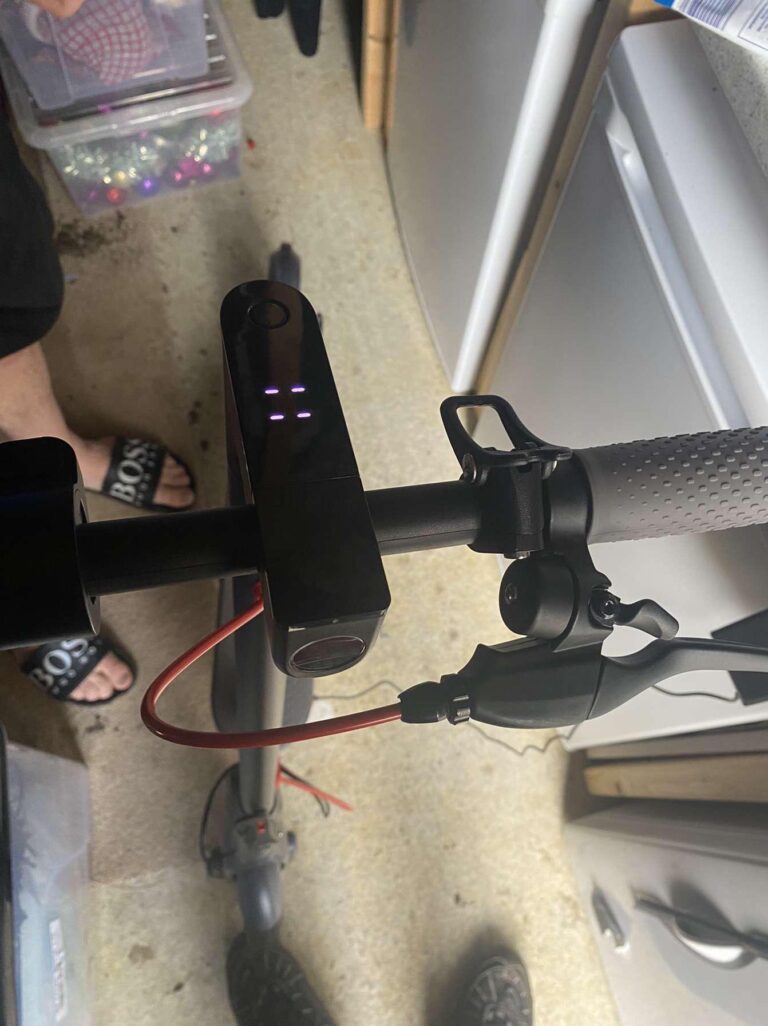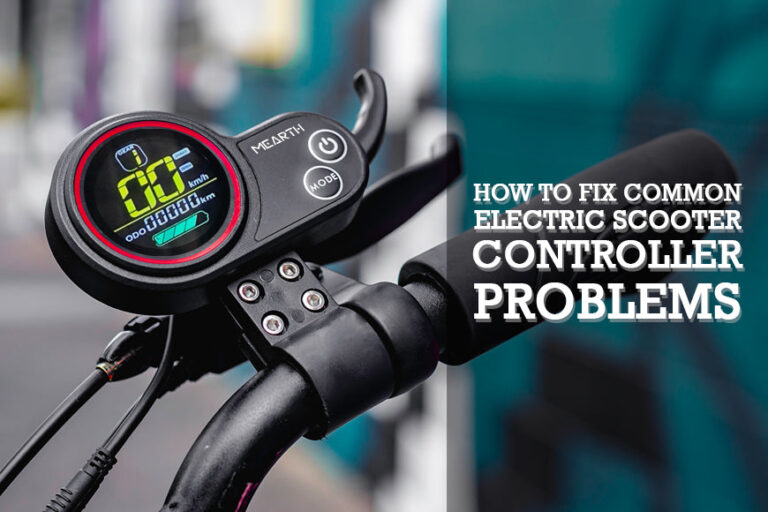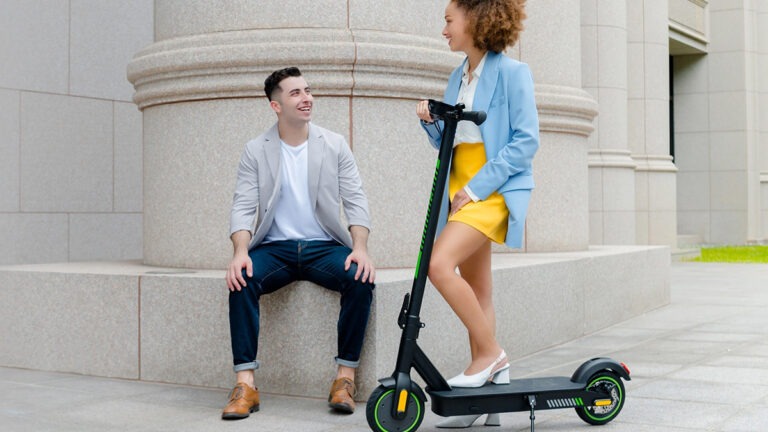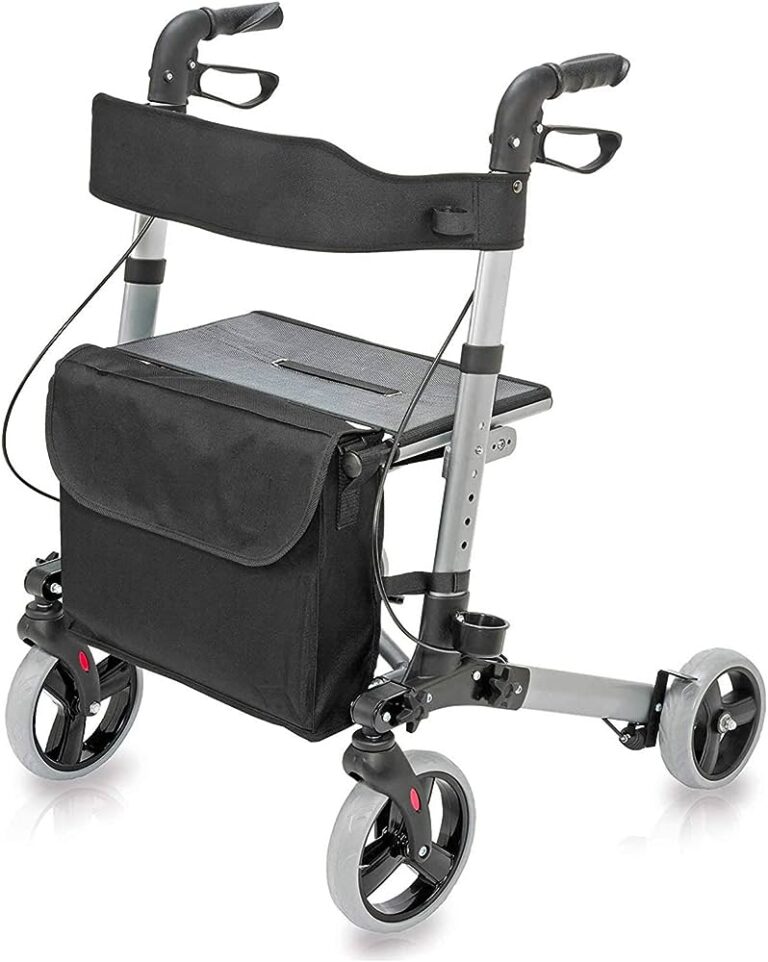Viro Electric Scooter Not Working: Troubleshooting Tips to Get Back on the Road
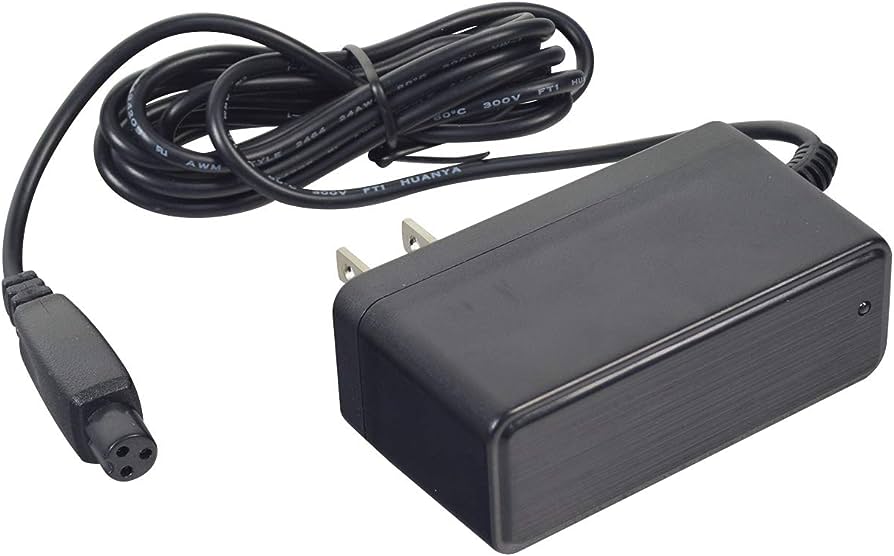
Viro Electric Scooter not working? Troubleshoot the issue by checking the battery and connections, and ensure that the scooter is turned on and the throttle is engaged properly.
Introducing the Viro Electric Scooter, a convenient and eco-friendly mode of transportation that allows you to zip around the city with ease. However, like any other device, there may be times when your scooter encounters technical difficulties. If you find yourself in a situation where your Viro Electric Scooter is not working, it can be frustrating and inconvenient.
But don’t worry, we’re here to help! We will guide you through some common troubleshooting steps to get your Viro Electric Scooter up and running again in no time. So let’s dive in and fix the problem together!
Battery Issues: Common Culprit Behind Scooter Breakdowns
Battery issues are often to blame for breakdowns in Viro electric scooters. If your scooter isn’t working, it’s likely a common culprit is the battery. Ensure it’s charged properly to avoid any disruptions in your scooting experience.
You’ve just bought your Viro electric scooter, excited to zip around town, but suddenly it’s not working as expected. Don’t fret! Battery issues are a common culprit behind scooter breakdowns. We’ll explore three battery-related troubles you might encounter and provide some possible solutions.
Scooter Not Turning On
- Dead battery: If your electric scooter doesn’t turn on at all, the battery could be completely drained.
- Loose connections: Check for any loose connections between the battery and the scooter’s wiring.
- Faulty power switch: It’s possible that the power switch is malfunctioning. Try toggling it on and off, ensuring it’s securely in the ‘on’ position.
- Solution: Charge the battery using the provided charger. If that doesn’t work, it might be time to replace the battery or contact customer support for further assistance.
Limited Range Despite A Full Charge
- Battery age: Over time, the battery’s capacity naturally diminishes, resulting in a reduced range.
- Inefficient riding conditions: Riding uphill, against strong winds, or on uneven terrain can significantly impact battery performance.
- Tire pressure: Improperly inflated tires can increase rolling resistance and drain the battery faster than usual.
- Solution: Consider replacing the battery if it’s older or make sure you’re riding under optimal conditions. Properly inflate the tires to the recommended pressure to maximize range.
Battery Not Holding A Charge
- Battery Overcharging: Leaving the scooter plugged in for an extended period can overcharge and shorten the battery’s lifespan.
- Temperature extremes: Extreme heat or cold can affect battery performance, causing it to lose capacity or not hold a charge.
- Internal battery issues: The battery may be damaged or faulty, preventing it from holding charge properly.
- Solution: Avoid overcharging by unplugging the scooter from the charger once it’s fully charged. Store and charge the scooter in a moderate temperature environment. If the problem persists, consider replacing the battery or seeking expert assistance.
Remember, battery issues are common, but they can usually be resolved with proper maintenance and troubleshooting. By understanding these common problems and implementing the suggested solutions, you’ll be back on the road in no time, enjoying the thrill of your Viro electric scooter once again!
Motor Problems: Identifying And Addressing Motor Failures
Learn how to identify and fix motor failures in your Viro electric scooter with our comprehensive guide. Discover common issues and get step-by-step instructions for troubleshooting and resolving motor problems. Improve the performance of your scooter and get back on the road in no time.
If you’re facing issues with your Viro electric scooter, specifically related to the motor, there are a few common problems that may be causing the malfunction. Identifying and addressing these motor failures promptly can help you get your scooter back on the road in no time.
Read on to learn about the common motor problems faced by Viro electric scooter owners and how to troubleshoot them effectively.
Scooter Not Moving Or Sluggish Acceleration:
- Loose connections: Check the wiring connections between the motor and the battery. Ensure they are securely fastened and free from corrosion.
- Battery charge: Inspect the battery charge level. If the battery is low, charge it fully and retry.
- Motor controller issues: A faulty motor controller can lead to a lack of power or sluggish acceleration. Consider inspecting and possibly replacing the motor controller.
- Throttle malfunction: Check the throttle mechanism for any damage or misalignment. If necessary, replace the throttle to restore proper acceleration.
Unusual Noise Coming From The Motor:
- Loose components: Tighten any loose bolts or screws on the motor. Vibrations from a loose component can cause unusual noises.
- Motor bearings: Worn-out or damaged motor bearings can result in abnormal sounds. Consider replacing the bearings if necessary.
- Belt tension: If your electric scooter utilizes a belt drive system, ensure that the belt tension is correct. A loose or too tight belt can cause noise issues.
Motor Overheating:
- Blocked airflow: Check for any obstructions or debris around the motor that might restrict proper airflow. Clear away any obstacles to allow sufficient cooling.
- Continual uphill riding: Climbing steep hills for extended periods can put excessive strain on the motor, leading to overheating. Avoid prolonged uphill rides to prevent motor overheating.
- Overloading: Avoid carrying loads that exceed the maximum weight capacity recommended for your electric scooter. Overloading can strain the motor, causing it to overheat.
Remember to prioritize safety and follow the usage guidelines provided by Viro. If the motor problems persist or you’re unsure about resolving them yourself, it’s advisable to contact a professional technician or the manufacturer’s customer support for further assistance.
Controller And Wiring: Troubleshooting Electrical Components
Experiencing issues with your Viro electric scooter? Don’t fret! Our troubleshooting guide will help you pinpoint electrical component problems, such as the controller and wiring, so you can get your scooter up and running in no time.
Scooter Unresponsive To Throttle Input:
- The viro electric scooter is designed to be responsive to throttle inputs, but sometimes it may not function as expected. Here are a few possible reasons why your scooter may be unresponsive to throttle input:
- Battery issue: Check if the battery is charged and properly connected. A low battery or loose connection can cause the scooter to be unresponsive.
- Faulty throttle: The throttle may be damaged or malfunctioning. Inspect the throttle mechanism and wiring for any signs of damage.
- Controller problem: The controller is an essential component that controls the scooter’s motor. A faulty controller could result in a lack of response to throttle input.
- Motor issue: There might be an issue with the motor itself. Check if the motor is making any abnormal noises or if there are any visible signs of damage.
- Faulty wiring: Inspect the wiring connecting the throttle, controller, and motor. Loose, damaged, or incorrectly connected wiring can lead to unresponsiveness.
Random Loss Of Power During Rides:
- Experiencing random power loss while riding your viro electric scooter can be frustrating. Here are a few possible causes of this issue:
- Battery drain: The scooter’s battery may be draining faster than expected, leading to sudden power loss. Check the battery charge level and ensure it is fully charged before rides.
- Motor overheating: Continuous use or riding on steep slopes can cause the motor to overheat, resulting in power loss. Allow the motor to cool down before using the scooter again.
- Loose connections: Loose wiring connections can disrupt the flow of power to the motor, causing intermittent power loss. Inspect and tighten all connections.
- Controller malfunction: If the controller is malfunctioning, it may intermittently interrupt power delivery to the motor. Check for any signs of damage or abnormalities in the controller.
- Faulty throttle: A faulty throttle can also lead to random power loss during rides. Inspect the throttle mechanism and wiring for any issues.
Faulty Wiring Causing Intermittent Issues:
- Intermittent issues with your viro electric scooter can often be traced back to faulty wiring. Here are a few common problems related to wiring that can cause intermittent issues:
- Loose connections: Over time, the scooter’s wiring connections may become loose due to vibrations and jolts. Ensure all connections are securely fastened.
- Damaged wires: Examine the wiring for any signs of damage, such as fraying or exposed wires. Damaged wires can lead to intermittent issues or complete failure.
- Incorrect wiring setup: Double-check the wiring setup to ensure it adheres to the scooter’s manual or wiring diagram. Incorrect wiring can cause unpredictable behavior.
- Corrosion: Corroded wires can disrupt the flow of electricity. Clean any corroded connectors or wires and apply a protective coating to prevent future corrosion.
- Water damage: If the scooter has been exposed to water or moisture, it can lead to electrical problems. Inspect the wiring for signs of water damage and dry any wet components thoroughly.
Remember, troubleshooting electrical components can sometimes be complex. If you’re unsure or unable to address the issues yourself, it’s best to seek professional assistance to ensure proper diagnosis and repair.
Step 1: Inspecting The Battery
To fix a Viro electric scooter not working, start by inspecting the battery for any issues. Check for loose connections or signs of damage that may be causing the scooter to malfunction.
Is your Viro electric scooter not working? Don’t worry, we’ve got you covered. The first step in troubleshooting the issue is to inspect the battery. Follow these simple steps to ensure your battery is in proper working condition:
Checking battery connections:
- Remove the battery cover to access the battery compartment.
- Examine the connections between the battery and the scooter. Ensure they are securely attached and free from any dirt or corrosion.
- Firmly reconnect any loose or disconnected wires.
Testing battery voltage with a multimeter:
- Use a multimeter to test the voltage of your electric scooter’s battery.
- Set the multimeter to DC voltage mode and touch the positive (red) probe to the positive terminal of the battery and the negative (black) probe to the negative terminal.
- Check the display on the multimeter to see the battery voltage. A fully charged battery should read around 36-42 volts. If the reading is significantly lower, it may indicate a battery issue.
Replacing or recharging the battery if necessary:
- If the battery voltage is below the recommended range, it may need to be recharged or replaced.
- If your scooter has a removable battery, consider charging it using a compatible charger. Follow the manufacturer’s instructions for optimal charging time.
- If the battery fails to hold a charge or the voltage remains low even after charging, it may be time to replace the battery. Contact Viro customer support or visit an authorized service center for assistance.
Remember to follow safety precautions and refer to the Viro electric scooter’s user manual for specific instructions regarding your scooter’s battery.
By following these steps and inspecting the battery, you’ll be one step closer to resolving the issue with your Viro electric scooter and getting back to enjoying your rides hassle-free.
Step 2: Assessing Motor-Related Concerns
Assessing motor-related concerns is a crucial step in troubleshooting a Viro electric scooter that is not working. By examining the motor and related components, you can identify and address any issues that may be affecting the scooter’s functionality.
Is your Viro electric scooter experiencing motor issues? Don’t worry, we’ll help you troubleshoot the problem. In this step, we’ll focus on examining motor connections and cables, testing the motor with a multimeter, and replacing or repairing the motor if needed.
Examining Motor Connections And Cables:
To start, let’s take a closer look at the motor connections and cables. Here’s what you need to do:
- Carefully inspect the motor connections to ensure they are secure and not loose.
- Check if there are any visible signs of damage or corrosion on the motor cables.
- Make sure the motor cables are properly connected to the battery and controller.
If you notice any loose connections, ensure they are securely plugged in. In case you find damaged cables or signs of corrosion, consider replacing them to ensure optimal functionality.
Testing Motor With A Multimeter:
Now let’s move on to testing the motor using a multimeter. Here’s how you can do it:
- Set your multimeter to the resistance (ohms) mode.
- Locate the motor’s wires and disconnect them from the controller.
- Connect the multimeter leads to the motor’s wires.
- Check the resistance reading on the multimeter. If it shows infinity or a very high resistance, it indicates a possible issue with the motor.
If the resistance reading is within the expected range, it’s likely that the motor is functioning correctly. However, if you get an abnormal reading, the motor may need to be replaced or repaired.
Replacing Or Repairing The Motor If Needed:
If you’ve determined that the motor is faulty and needs to be either replaced or repaired, follow these steps:
- Contact Viro or the manufacturer for assistance. They can provide guidance on locating the correct replacement motor or offer repair services.
- If you choose to replace the motor yourself, carefully disconnect the old motor from the scooter, ensuring you remember the exact wiring connections.
- Install the new motor by connecting the wires in the correct order and securing them properly.
- Test the scooter to verify that the new motor is functioning as expected.
Remember, if you’re uncomfortable with the process or unsure about your abilities, consult a professional for assistance. They will ensure the proper replacement or repair of the motor, getting your Viro electric scooter back up and running smoothly.
Step 3: Addressing Controller And Wiring Issues
Addressing controller and wiring issues is a crucial step in troubleshooting a Viro electric scooter that is not working. Ensure all connections are secure and inspect the controller for any signs of damage or malfunction.
Inspecting Controller Connections And Wires
Inspecting the connections and wires of your Viro electric scooter’s controller is an important step to diagnose any issues it may have. Here are a few things to consider:
- Start by visually inspecting the controller connections and wires for any obvious signs of damage or looseness. Pay attention to frayed wires, loose connectors, or burnt-out components.
- Gently wiggle the connectors to ensure they are secure. Loose connections can result in the scooter not working properly.
- Check if there are any loose or disconnected wires. If you find any, reattach them securely.
- Look for any corrosion or rust on the connectors. If you notice this issue, clean it with a mild electronic contact cleaner.
Testing Controller Functionality
To determine if the controller of your Viro electric scooter is working correctly, you can perform a few tests:
- Use a multimeter to check the voltage output of the controller. Compare the readings with the specifications provided by the manufacturer. If the voltage is significantly different, there may be a problem with the controller.
- Verify that there are no loose wires or damaged components inside the controller. Loose wires or damaged components can hinder the proper functioning of the controller.
- Test the throttle control by checking if it responds smoothly to acceleration and deceleration. If there are delays or inconsistencies, it could indicate a problem with the controller.
Replacing Or Repairing Faulty Components
If you identify any faulty components during the inspection or testing process, you may need to replace or repair them. Here are a few steps to consider:
- Disconnect the power supply and remove any covers or casings that may be protecting the controller and its components.
- Consult the user manual or the manufacturer’s website for guidance on replacing specific components. Follow the instructions carefully to ensure a correct and safe installation.
- If you are not comfortable replacing the components yourself, it is advisable to seek professional assistance.
- If the damaged components are repairable, use appropriate tools and techniques to fix them. Ensure that you have the necessary knowledge and skills, or consult a professional for assistance.
Remember, addressing controller and wiring issues in your Viro electric scooter can help troubleshoot and resolve problems that may be preventing it from working properly.
Regular Battery Maintenance
Regular battery maintenance is essential for keeping your Viro electric scooter working efficiently. Ensuring proper charging and storage can help prevent issues and extend the lifespan of your scooter’s battery.
The Viro electric scooter is a convenient mode of transport that provides an eco-friendly way to travel. However, like any other electronic device, it may encounter issues from time to time. One common problem users may experience is the electric scooter not working.
In this blog post, we will focus on regular battery maintenance, which is crucial for ensuring the proper functioning of your Viro electric scooter. By following these tips, you can prolong the life of your scooter’s battery and enjoy smooth rides for longer periods of time.
Proper Charging Habits:
- Charge your electric scooter regularly: It is essential to charge your Viro scooter’s battery regularly to maintain its performance. Aim to charge it after each use or at least once every few days.
- Avoid overcharging: Overcharging the battery can lead to decreased battery life. Once the battery is fully charged, unplug it from the charger to prevent any damage.
- Use the recommended charger: Always use the charger provided by Viro or a compatible charger recommended by the manufacturer. Using an incompatible charger can cause damage to the battery or the electric system of the scooter.
Avoiding Extreme Temperatures:
- Store the electric scooter in moderate temperatures: Extreme temperatures can negatively impact the battery’s performance. Avoid exposing your Viro scooter to extremely hot or cold environments for prolonged periods.
- Avoid charging in extreme temperatures: While charging your scooter, ensure that the ambient temperature is within the recommended range. Charging in extreme temperatures can affect the battery’s capacity and overall performance.
Cleaning Battery Terminals:
- Regularly inspect and clean the battery terminals: Over time, dirt and debris can accumulate on the battery terminals, hampering their ability to connect properly. Clean the terminals using a soft cloth and a mild cleaning solution to maintain a good electrical connection.
- Ensure proper battery terminal connections: Check that all the battery terminals are securely connected. Loose or corroded terminals can lead to connection issues and poor performance.
By following these regular battery maintenance practices, you can prevent potential issues with your Viro electric scooter and ensure that it operates smoothly and efficiently. Taking care of the battery will not only extend its lifespan but also enhance your overall riding experience.
Motor Care And Inspection
Viro electric scooter not working? Motor care and inspection can help diagnose and fix the issue. Ensure your scooter is in top condition for a smooth and enjoyable ride.
The motor of your Viro electric scooter is the heart of its performance. Regular care and inspection are essential to ensure its optimal functioning. Below, we’ll explore some vital aspects of motor care and inspection that can help troubleshoot issues and keep your scooter running smoothly.
Keeping The Motor Clean And Debris-Free:
- Remove any dirt, dust, or debris accumulated on the motor using a soft brush or cloth.
- Inspect the air vents and cooling fins regularly, ensuring they are free from obstructions.
- Avoid using excessive water when cleaning the motor to prevent damage. Instead, use a slightly damp cloth for gentle cleaning.
Lubricating Moving Parts When Necessary:
- Apply lubricant to the motor’s moving parts, such as bearings and shafts, as recommended by the manufacturer.
- Regular lubrication helps reduce friction and enhances the efficiency of the motor.
- Be cautious not to over-lubricate, as this can attract dirt and cause further damage.
Checking Motor Mounting And Alignment:
- Periodically inspect the motor mounts to ensure they are securely fastened.
- Misalignment can lead to vibrations and reduced performance, so check for any signs of misalignment and adjust if necessary.
- It is crucial to refer to the manufacturer’s guidelines for proper mounting and alignment techniques.
By following these motor care and inspection practices, you can identify potential issues early on, prevent damage, and ensure your Viro electric scooter works optimally. Regular maintenance of the motor will not only extend its lifespan but also enhance your riding experience.
Controller And Wiring Maintenance
Maintaining the controller and wiring of your Viro Electric Scooter is crucial for troubleshooting when it’s not working. Regular inspection and upkeep are necessary to ensure optimal performance.
The controller and wiring system of your Viro electric scooter are crucial for its smooth operation. By following proper maintenance practices, you can ensure that these components stay in good condition and prevent any issues from arising. Here are some essential tips to keep in mind:
Avoiding Water Damage To Electrical Components:
- Do not operate the scooter in heavy rain or submerge it in water to prevent water damage to the controller and wiring.
- If the scooter gets wet accidentally, make sure to dry it thoroughly before using it again to avoid any electrical issues.
Regularly Checking For Loose Connections:
- Inspect the wiring connections periodically to ensure they are secure and tight.
- If you notice any loose connections, gently reconnect them and ensure they are snugly in place.
- Loose connections can lead to malfunctioning of the scooter, so regular checks are essential.
Proper Storage To Prevent Wire Damage:
- When not in use, store your electric scooter in a dry and safe place to avoid wire damage.
- Avoid storing the scooter in extreme temperatures or exposed to direct sunlight, as it can deteriorate the wiring insulation.
- Remove any dirt, debris, or moisture from the scooter before storing it to maintain optimal working conditions.
By following these maintenance practices, you can significantly prolong the lifespan of your Viro electric scooter and prevent any issues with its controller and wiring components. Remember, a well-maintained scooter will provide you with a smooth and enjoyable riding experience.
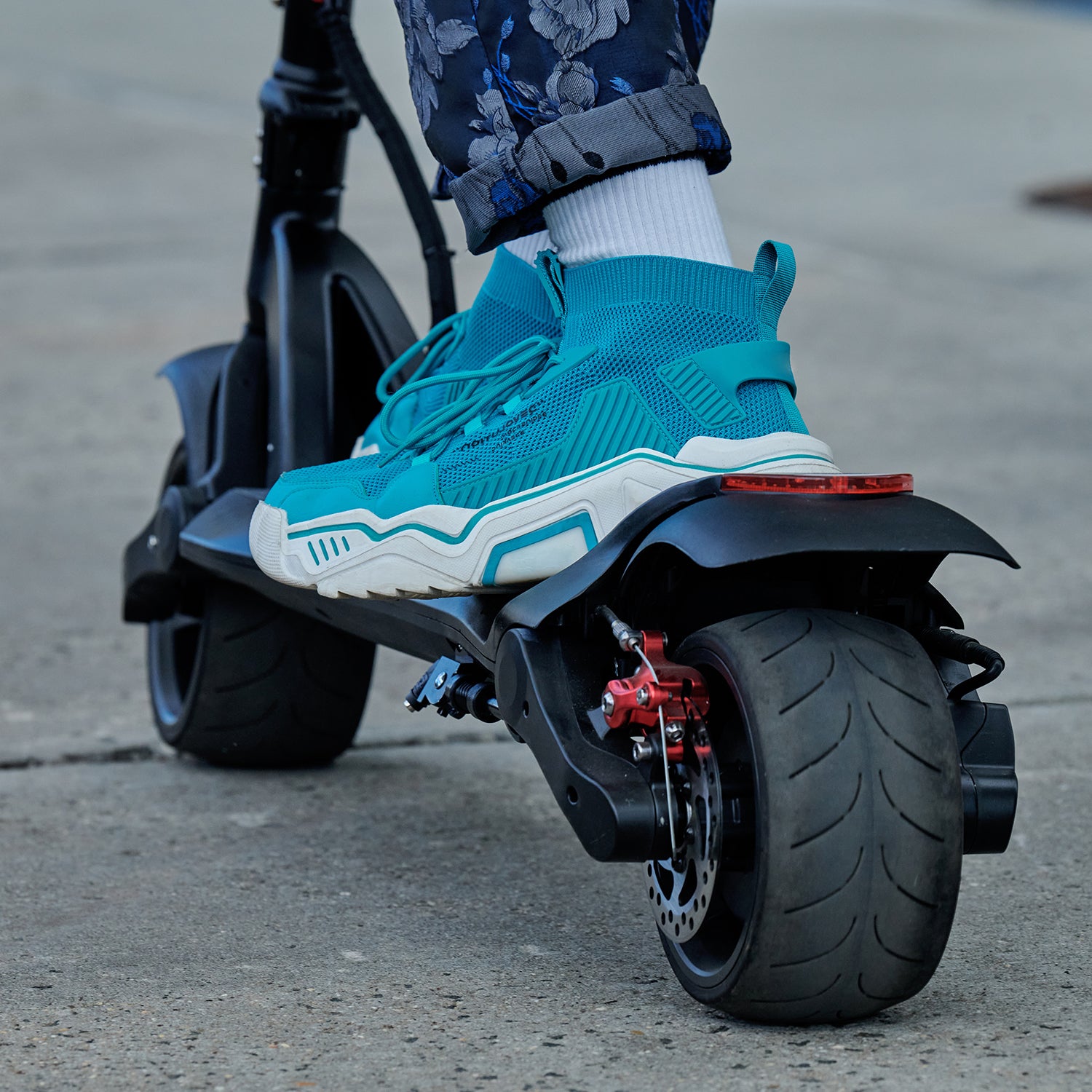
Credit: ridejetson.com
Frequently Asked Questions Of Viro Electric Scooter Not Working
Why Is My Electric Scooter Not Working?
Possible answer: Your electric scooter may not be working due to a variety of reasons, such as a dead battery or a broken motor.
How Do I Know If My Viro Scooter Is Charging?
To check if your Viro scooter is charging, look for the indicator light on the scooter’s charging port.
How Long Does Viro Scooter Battery Last?
Viro scooter battery lasts for about 20 miles on a single charge.
Why Does My Electric Scooter Only Turn On When Plugged In?
Your electric scooter only turns on when plugged in because it relies on the charging power to activate.
Conclusion
Troubleshooting and resolving issues with your Viro Electric Scooter can often be a simple and straightforward process. By following the steps outlined in this blog post, you can identify common problems such as battery malfunctions, motor issues, and connectivity problems.
Remember to always check the scooter’s power source, inspect the cables and connections, and consult the user manual for troubleshooting tips specific to your model. Additionally, reaching out to the Viro customer support team for assistance can provide valuable insights and guidance for resolving more complex issues.
Regular maintenance and care, such as proper storage and avoiding hazardous conditions, can also help to prevent problems from arising in the first place. By taking these proactive measures and utilizing the resources available to you, you can ensure that your Viro Electric Scooter continues to provide a reliable and enjoyable mode of transportation for years to come.

